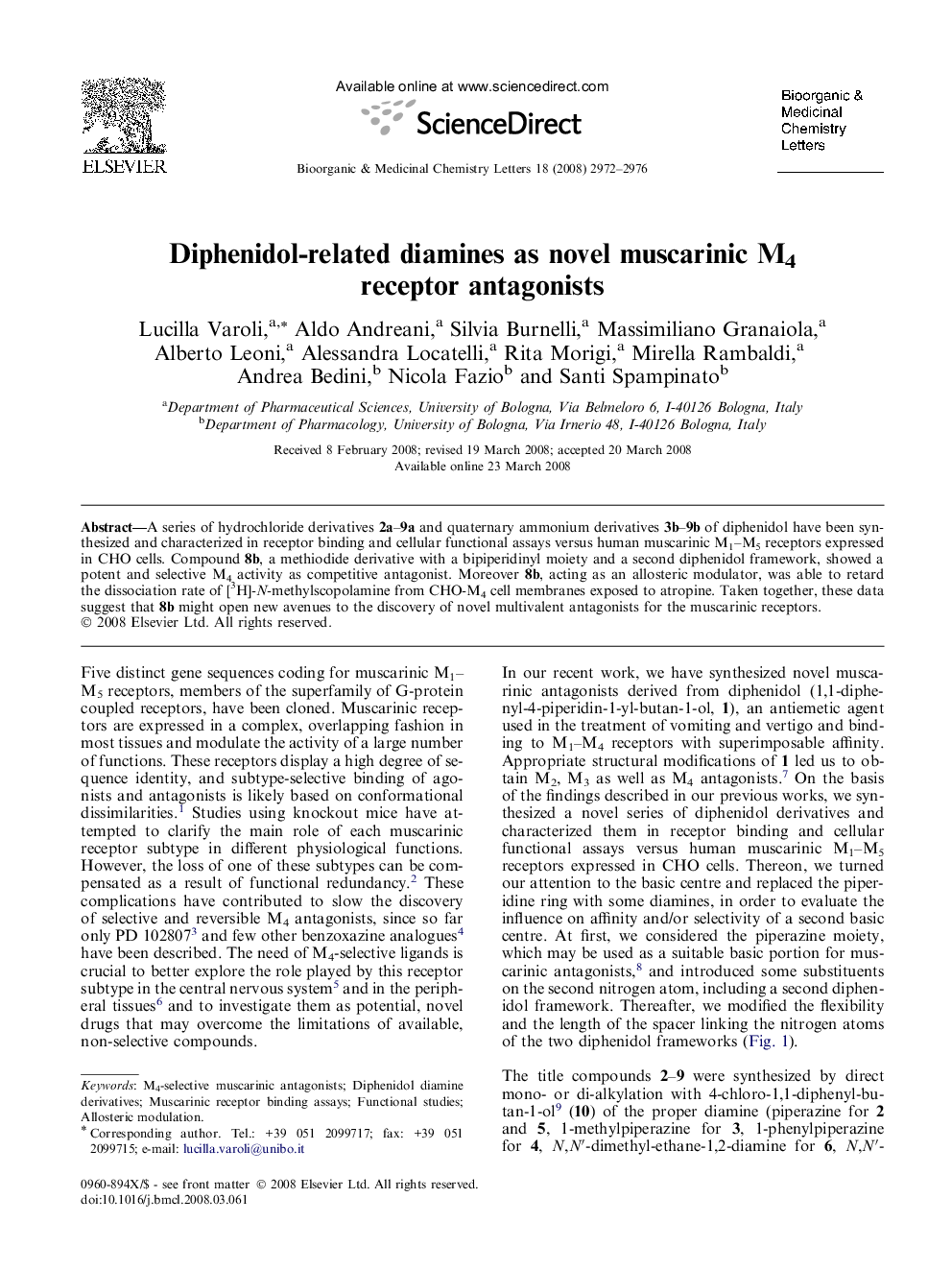| Article ID | Journal | Published Year | Pages | File Type |
|---|---|---|---|---|
| 1376577 | Bioorganic & Medicinal Chemistry Letters | 2008 | 5 Pages |
A series of hydrochloride derivatives 2a–9a and quaternary ammonium derivatives 3b–9b of diphenidol have been synthesized and characterized in receptor binding and cellular functional assays versus human muscarinic M1–M5 receptors expressed in CHO cells. Compound 8b, a methiodide derivative with a bipiperidinyl moiety and a second diphenidol framework, showed a potent and selective M4 activity as competitive antagonist. Moreover 8b, acting as an allosteric modulator, was able to retard the dissociation rate of [3H]-N-methylscopolamine from CHO-M4 cell membranes exposed to atropine. Taken together, these data suggest that 8b might open new avenues to the discovery of novel multivalent antagonists for the muscarinic receptors.
Graphical abstractThe synthesis and pharmacological evaluation of novel diphenidol derivatives as muscarinic M1–M5 receptor antagonists are described. Compound 8b displayed a potent and selective in vitro activity as M4 antagonist.Figure optionsDownload full-size imageDownload as PowerPoint slide
